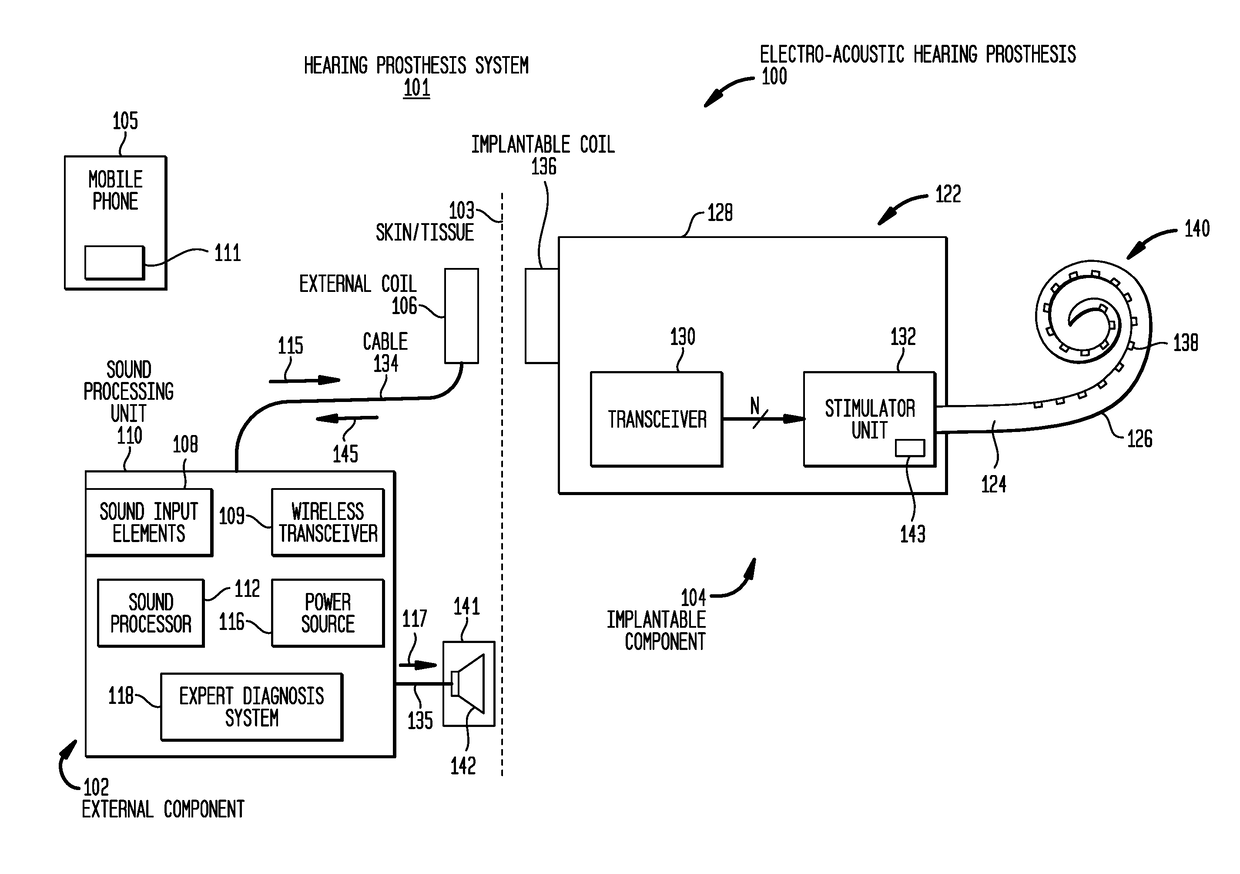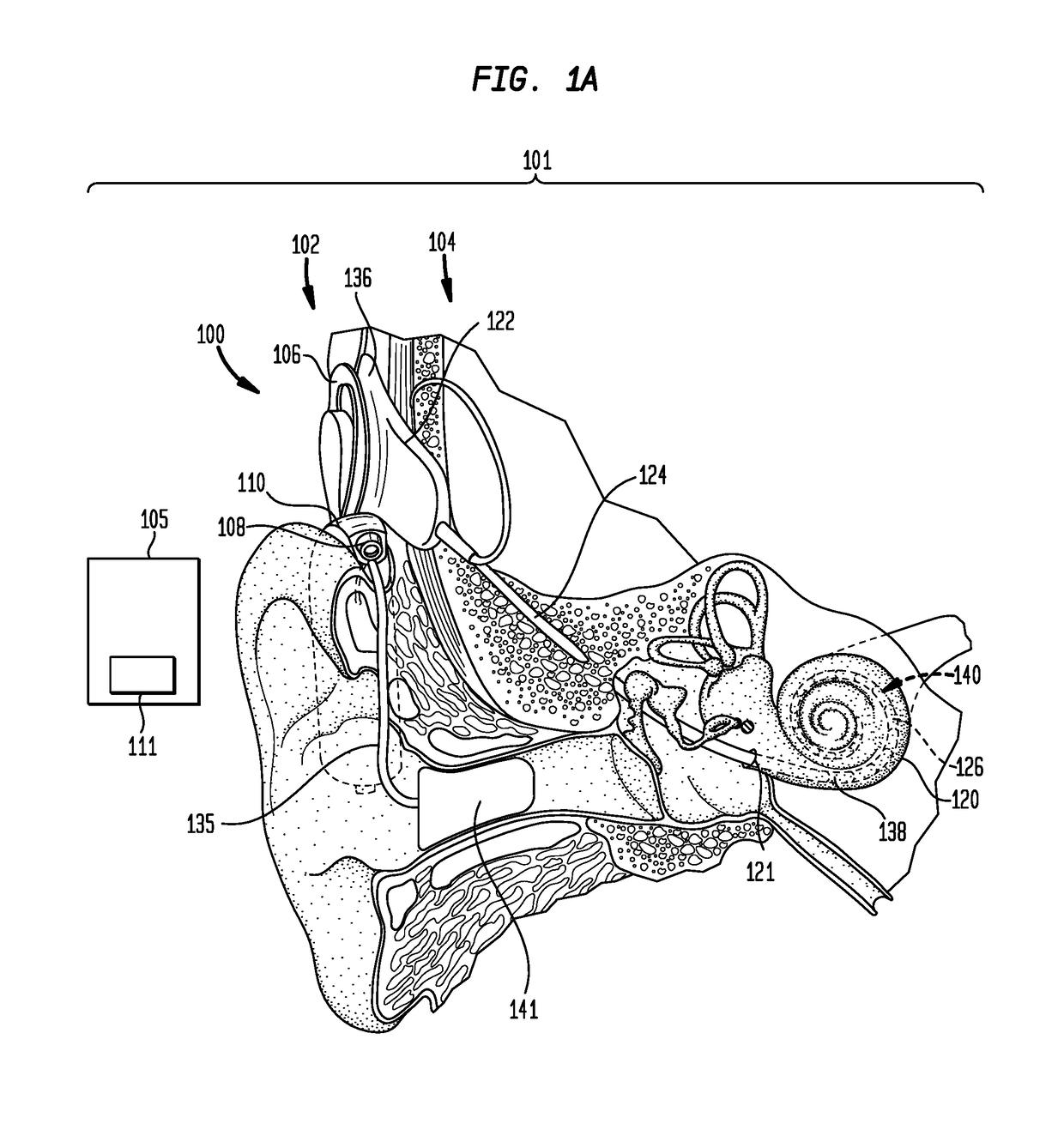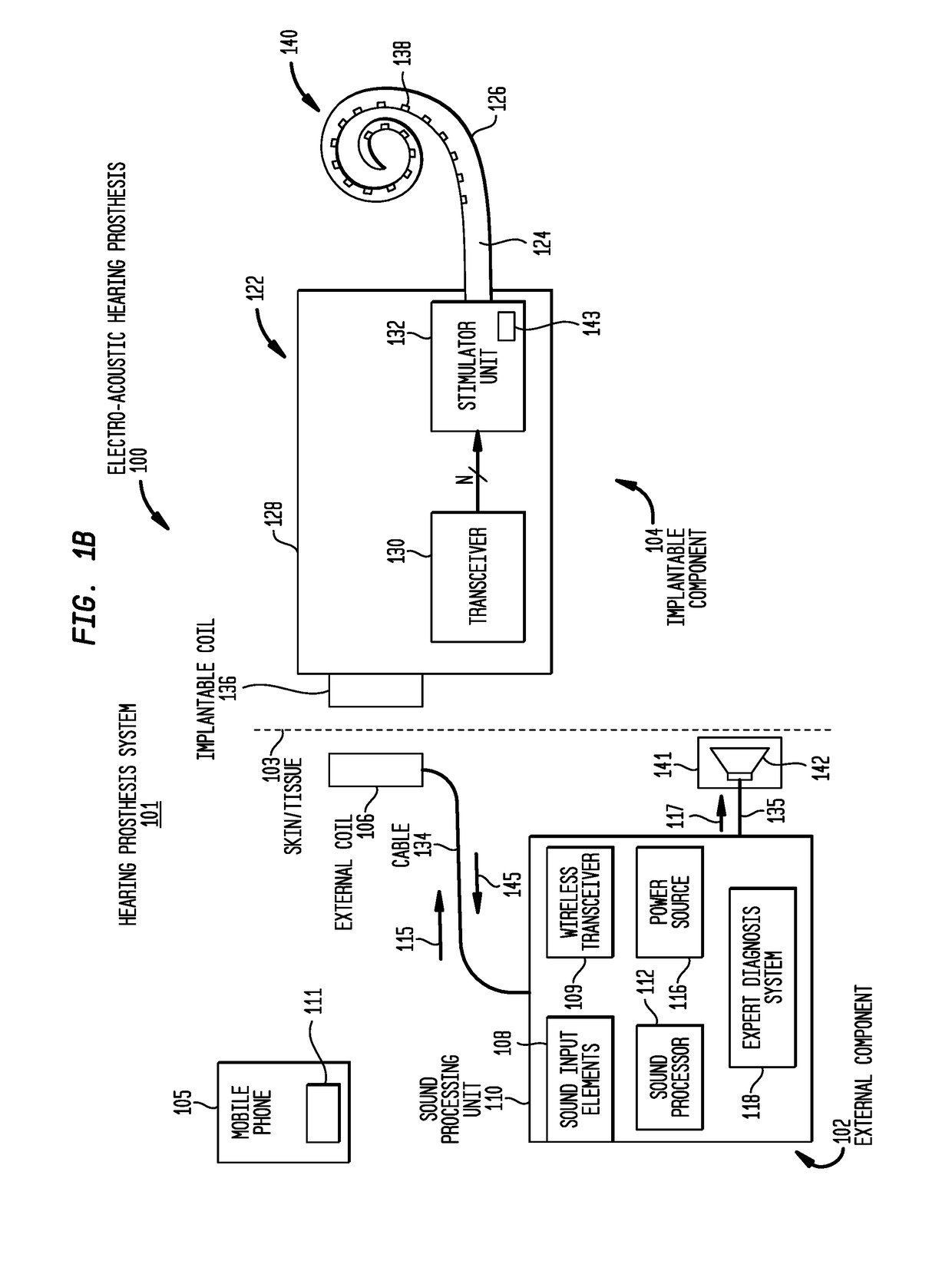Automated inner ear diagnoses
- Summary
- Abstract
- Description
- Claims
- Application Information
AI Technical Summary
Benefits of technology
Problems solved by technology
Method used
Image
Examples
Embodiment Construction
[0015]Auditory / hearing prosthesis recipients suffer from different types and levels of hearing loss (e.g., conductive and / or sensorineural). However, it is now common for many hearing prosthesis recipients to retain some residual natural acoustic hearing ability (residual hearing) after receiving the hearing prosthesis. That is, hearing prosthesis recipients often retain at least some of their natural ability to hear sounds. There has been increased focus on preserving a recipient's residual hearing during implantation of a hearing prosthesis into the recipient. For example, in the case of cochlear implants, progressive improvements in the design of intra-cochlear electrode arrays (stimulating assemblies), surgical implantation techniques, tooling, etc. have enabled atraumatic surgeries which preserve at least some of the recipient's fine inner ear structures (e.g., cochlea hair cells) and the natural cochlea function, particularly in the higher frequency regions of the cochlea. Acc...
PUM
 Login to view more
Login to view more Abstract
Description
Claims
Application Information
 Login to view more
Login to view more - R&D Engineer
- R&D Manager
- IP Professional
- Industry Leading Data Capabilities
- Powerful AI technology
- Patent DNA Extraction
Browse by: Latest US Patents, China's latest patents, Technical Efficacy Thesaurus, Application Domain, Technology Topic.
© 2024 PatSnap. All rights reserved.Legal|Privacy policy|Modern Slavery Act Transparency Statement|Sitemap



